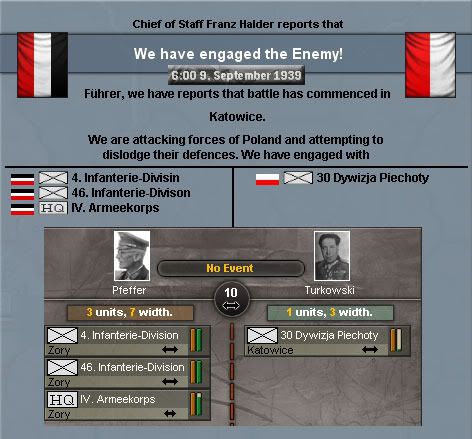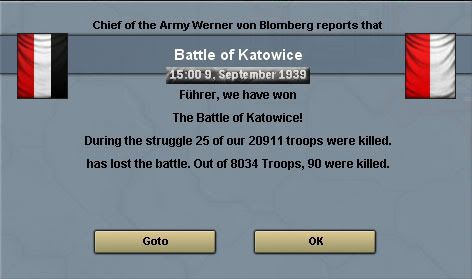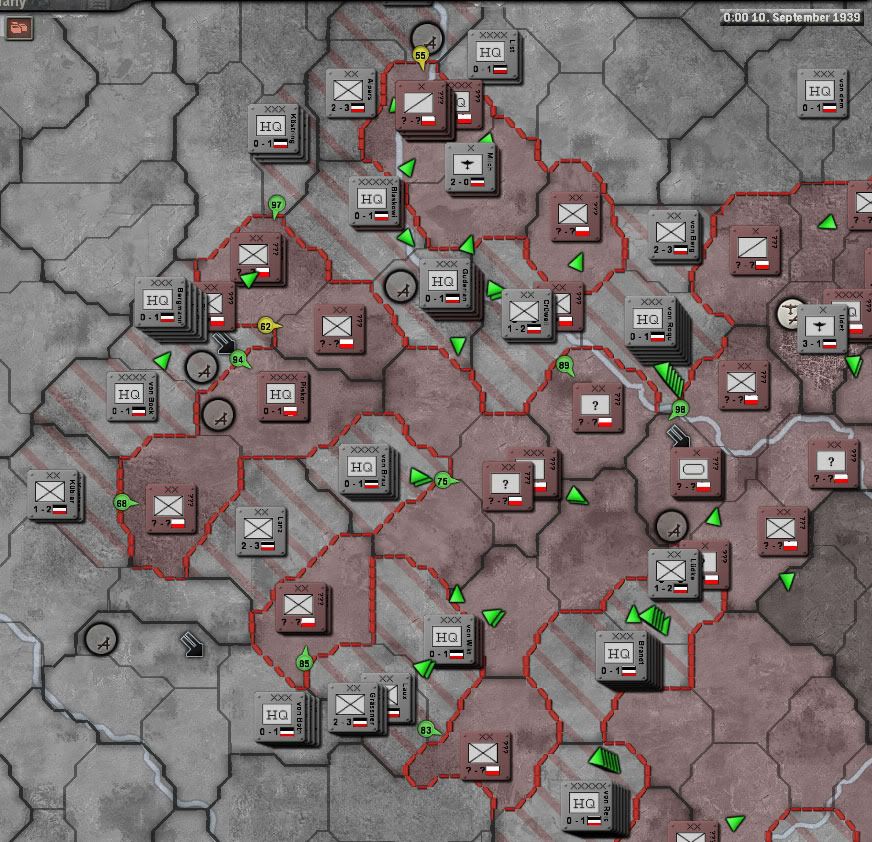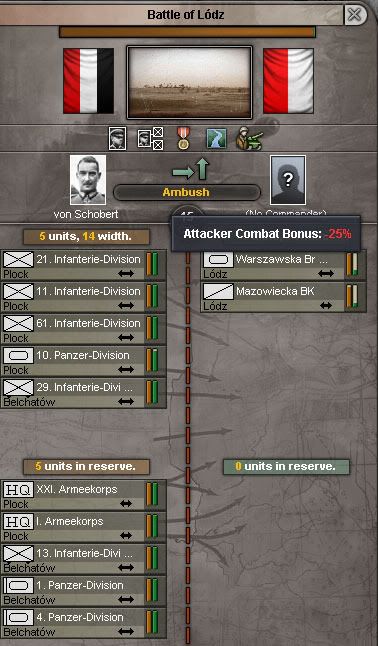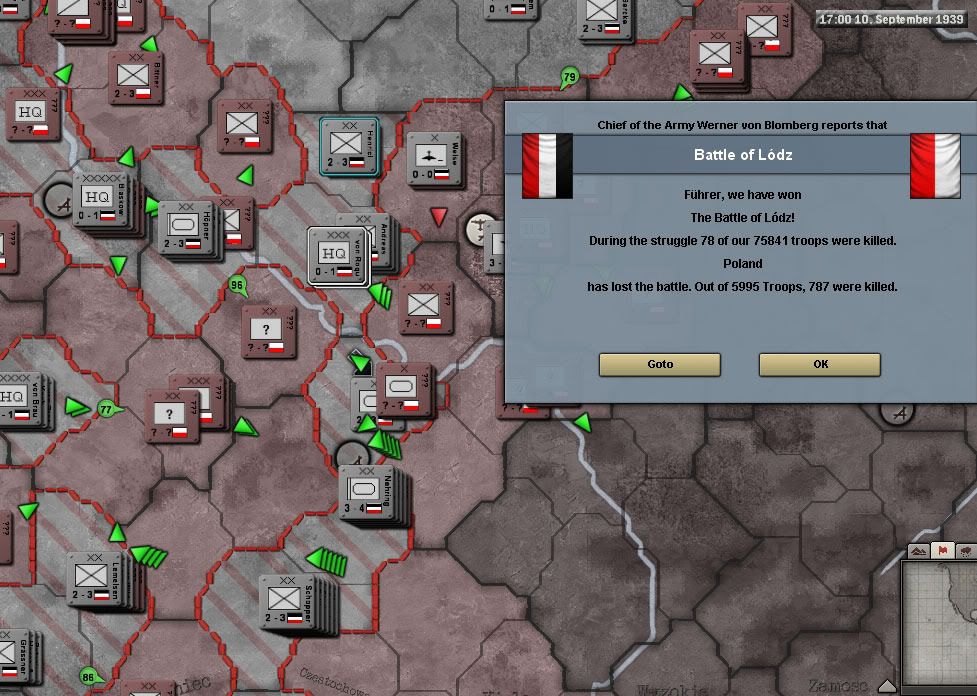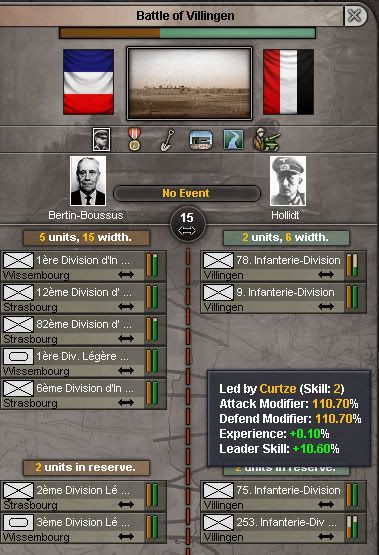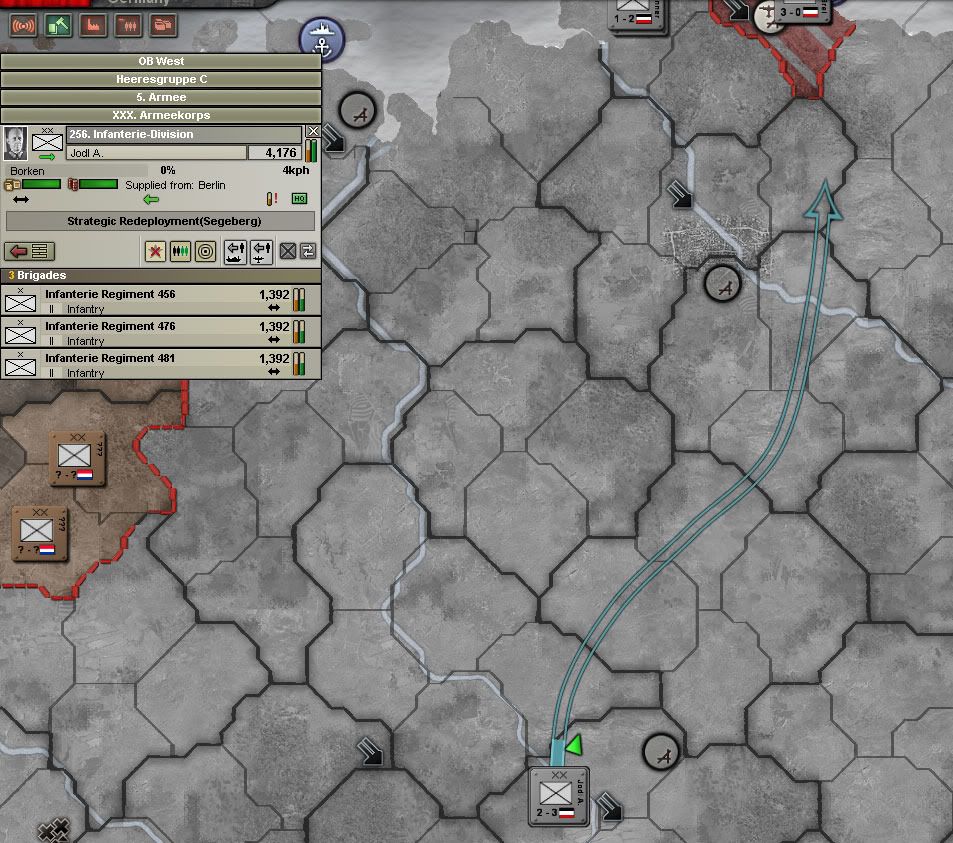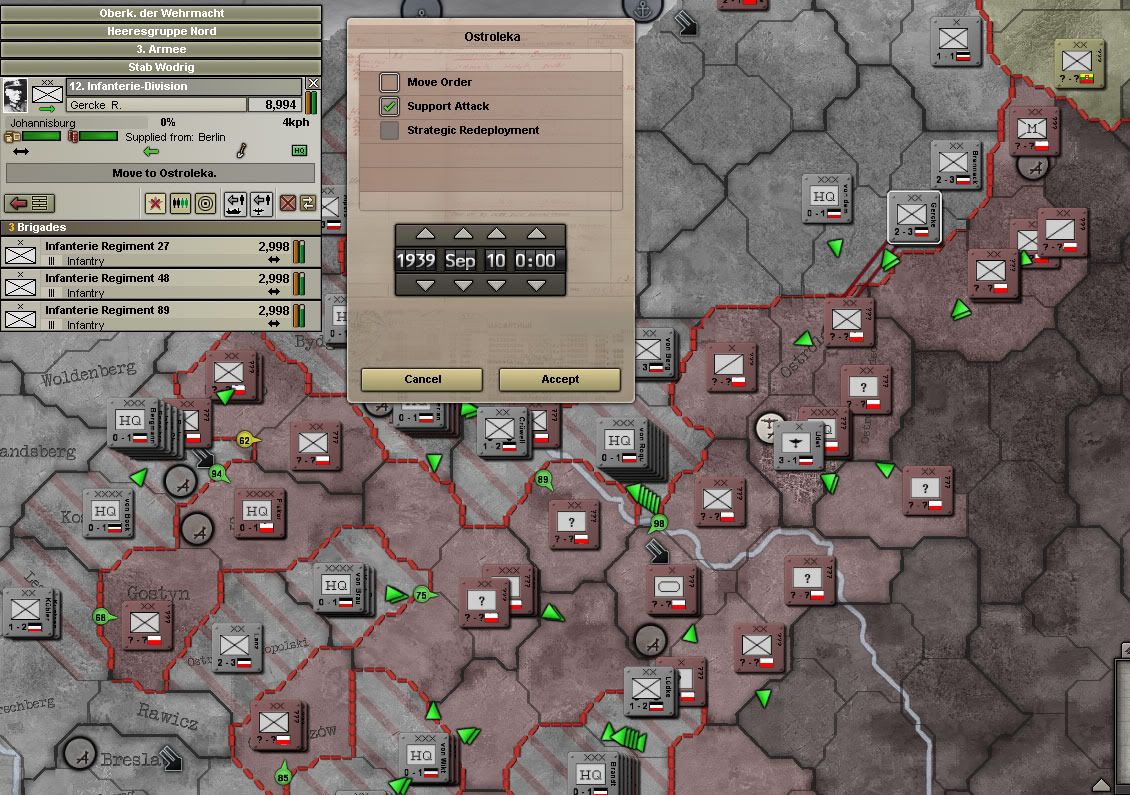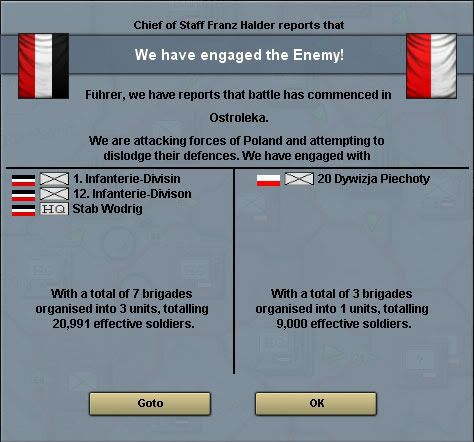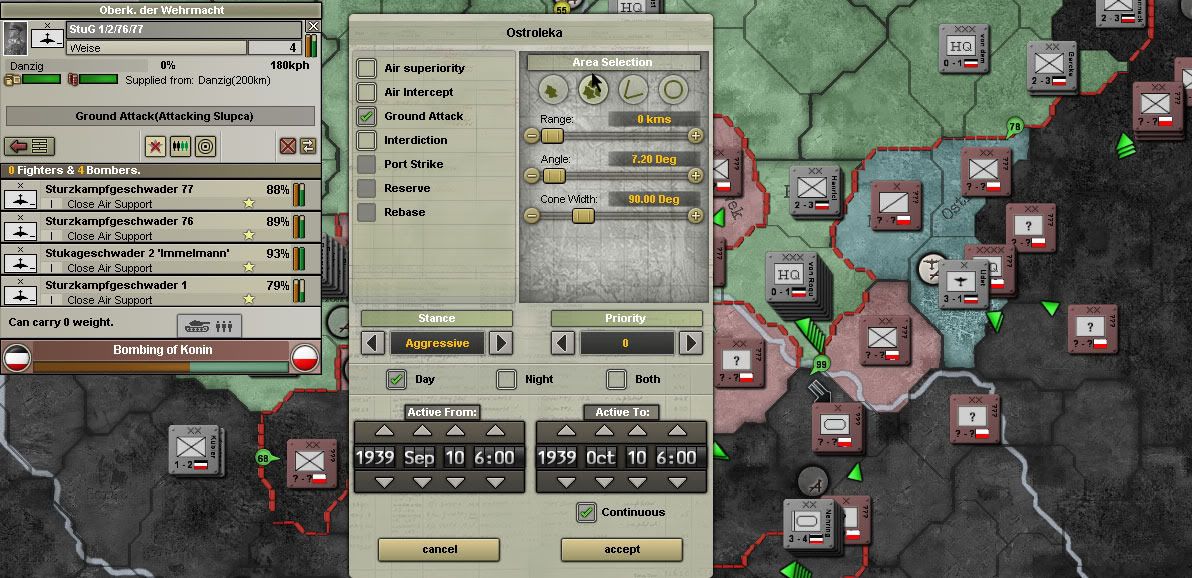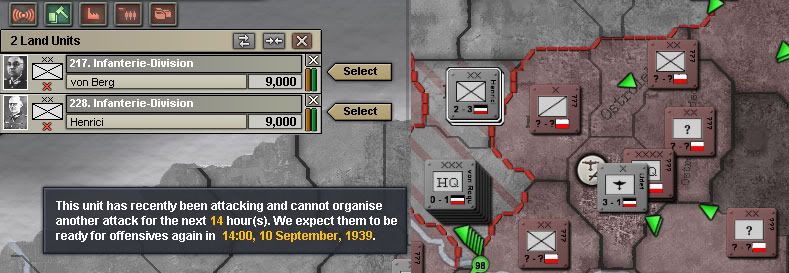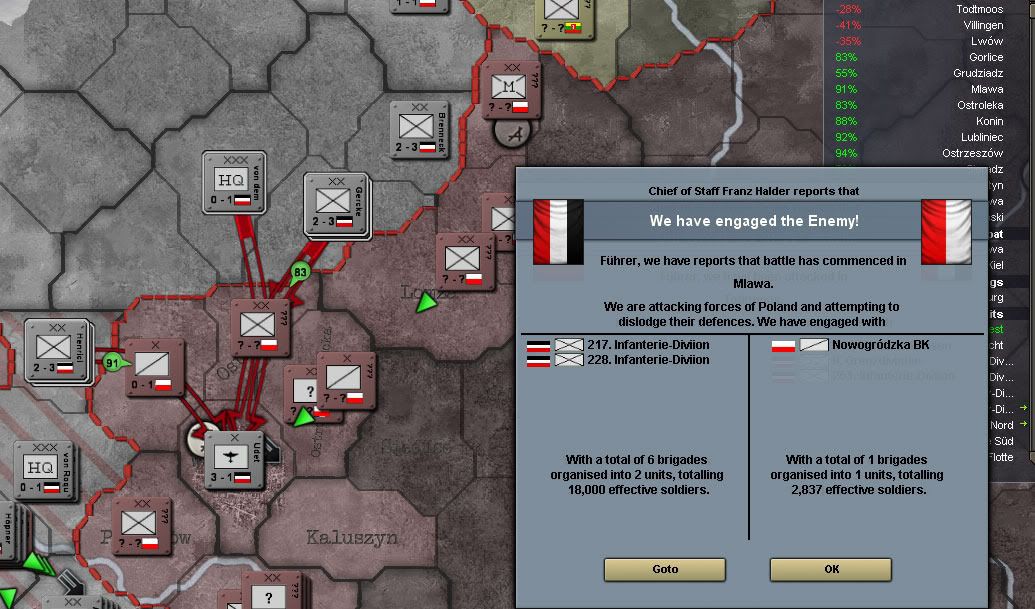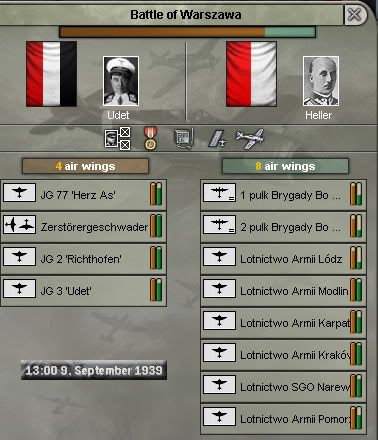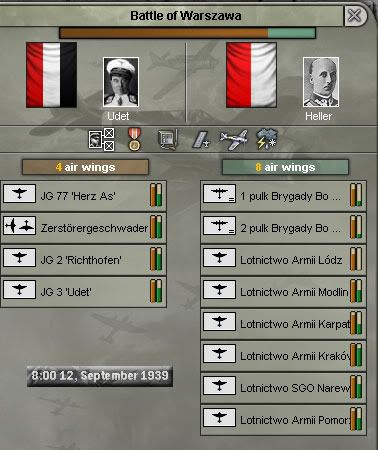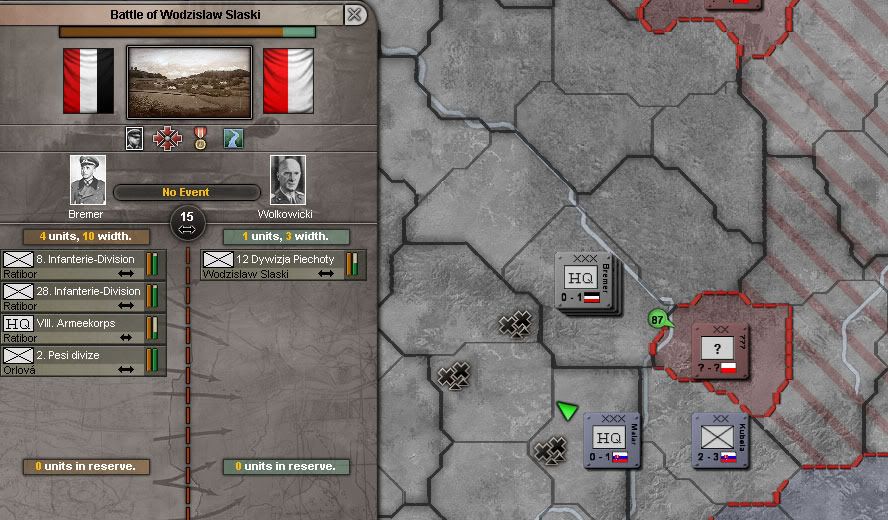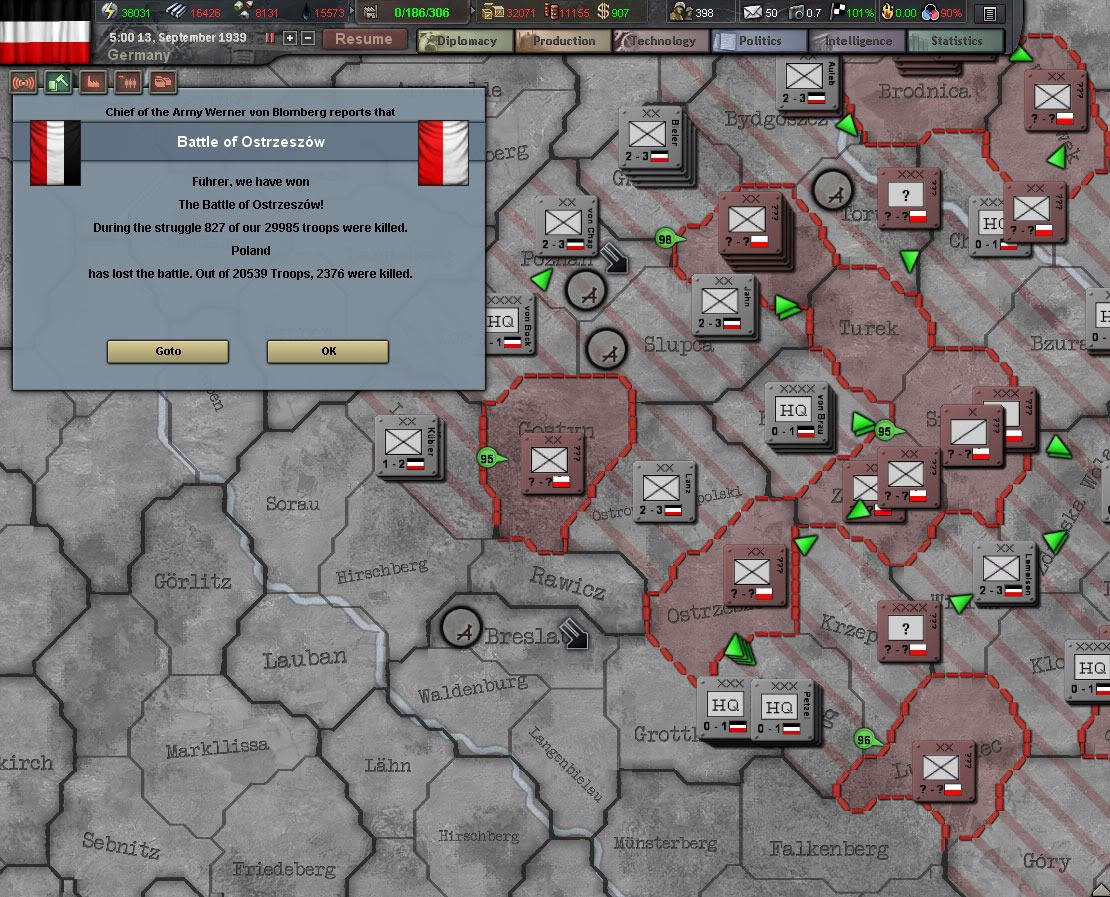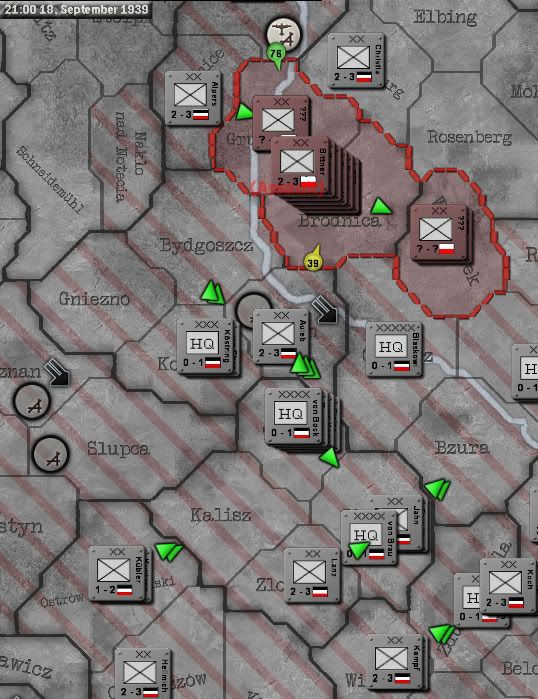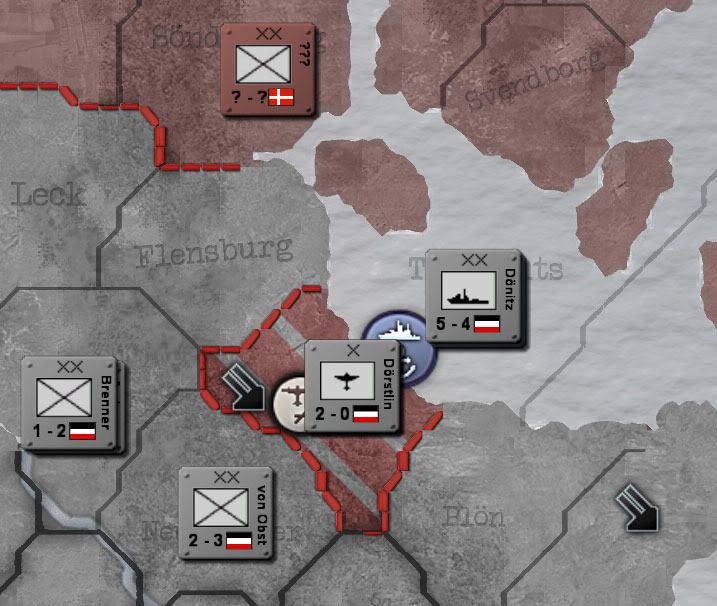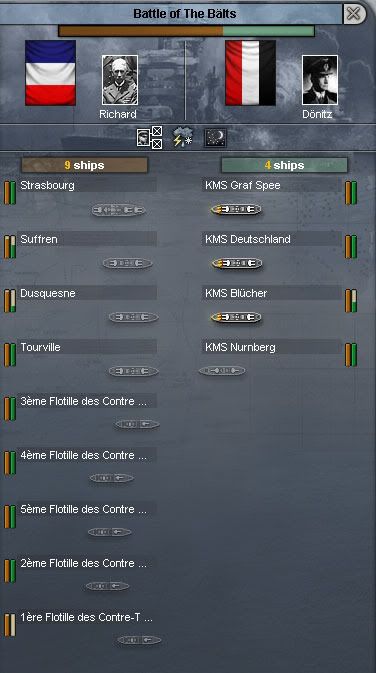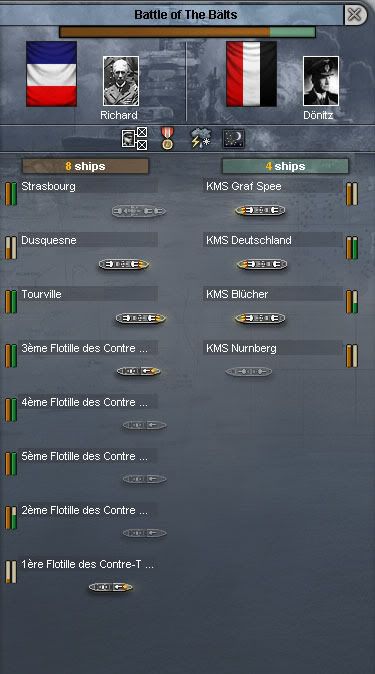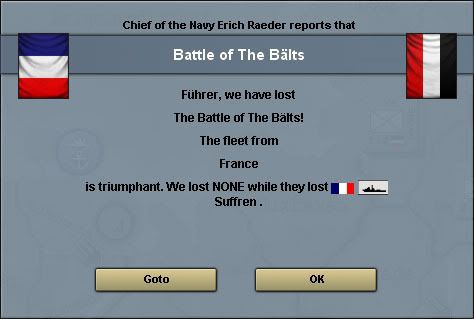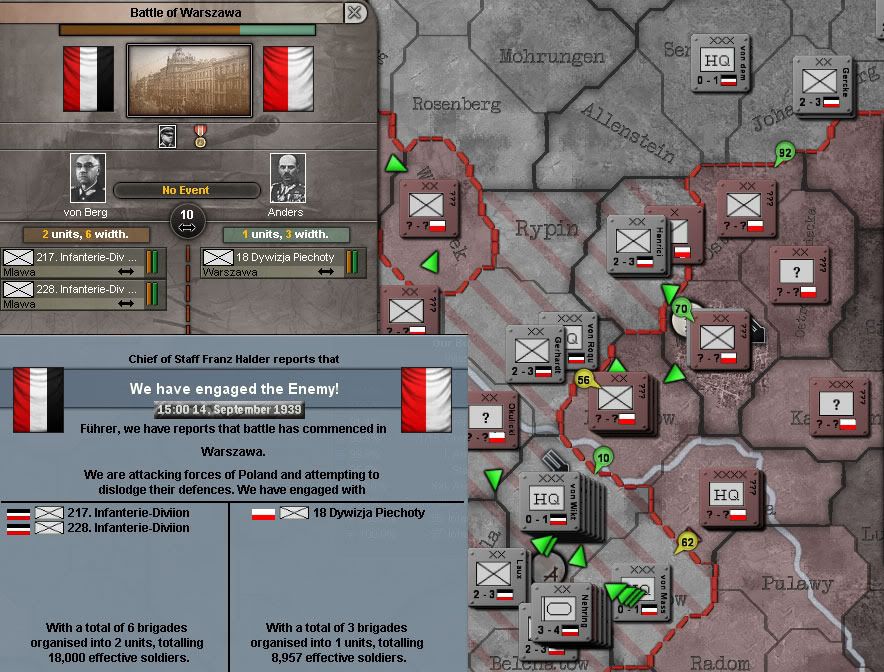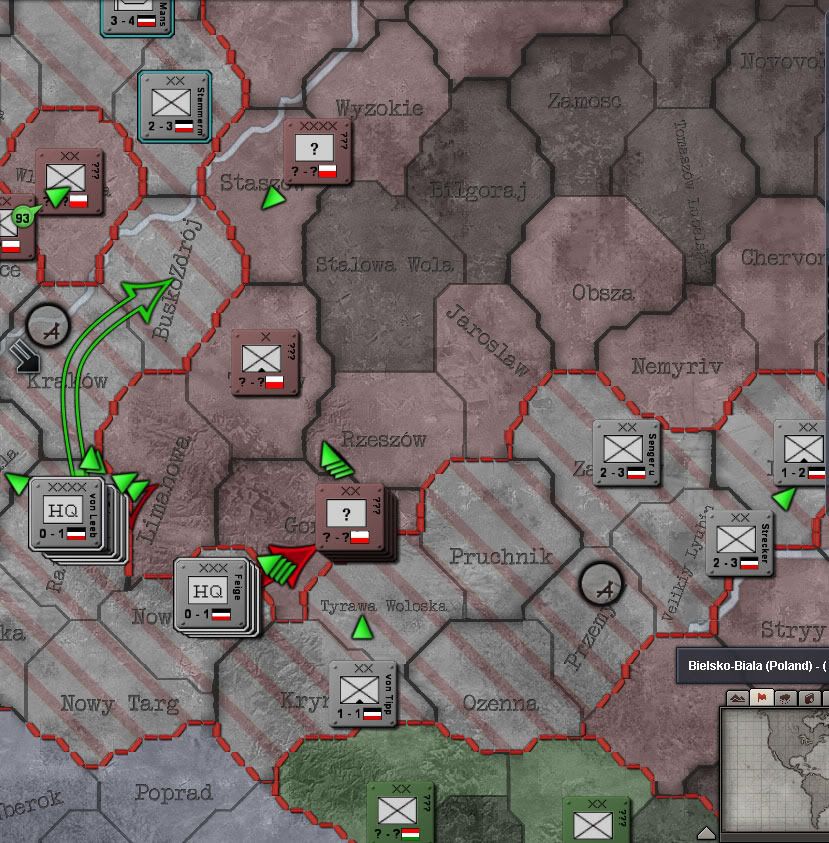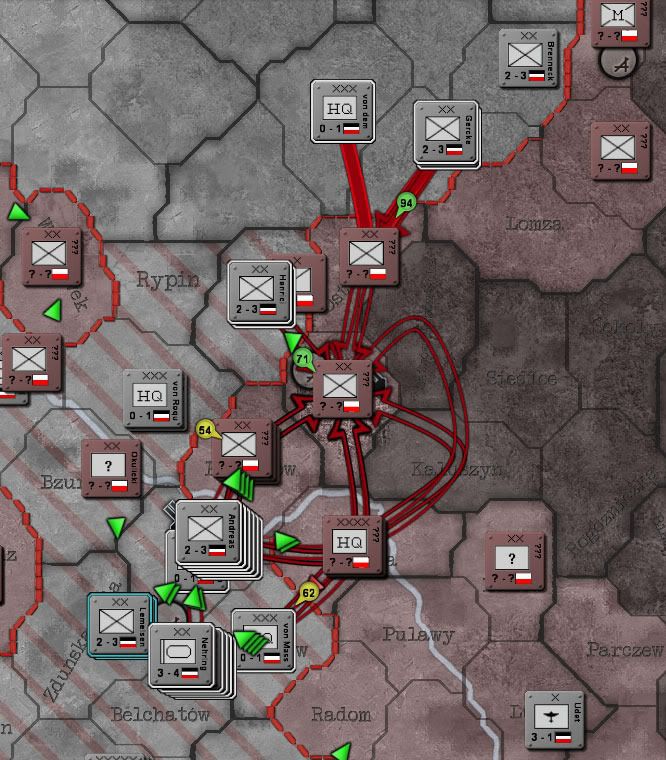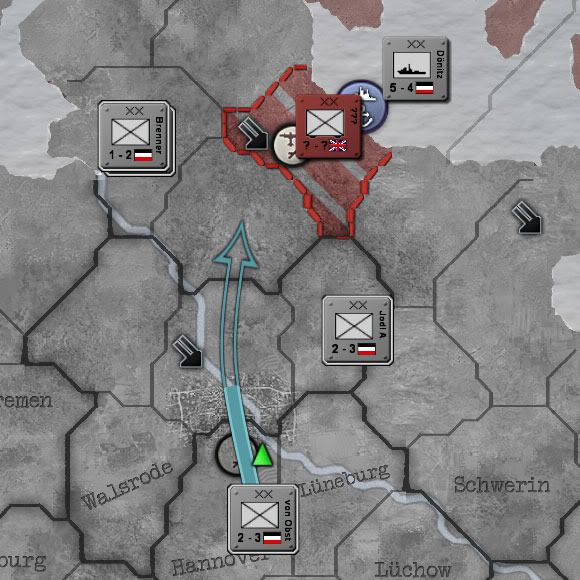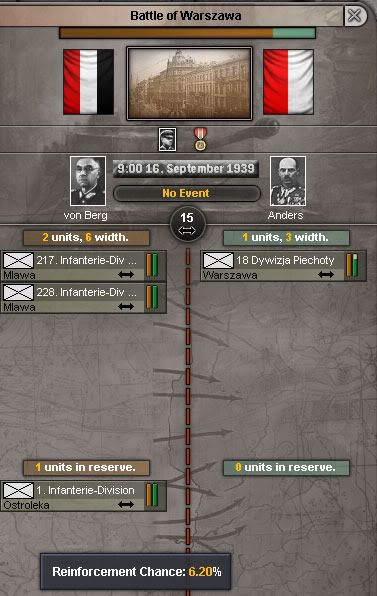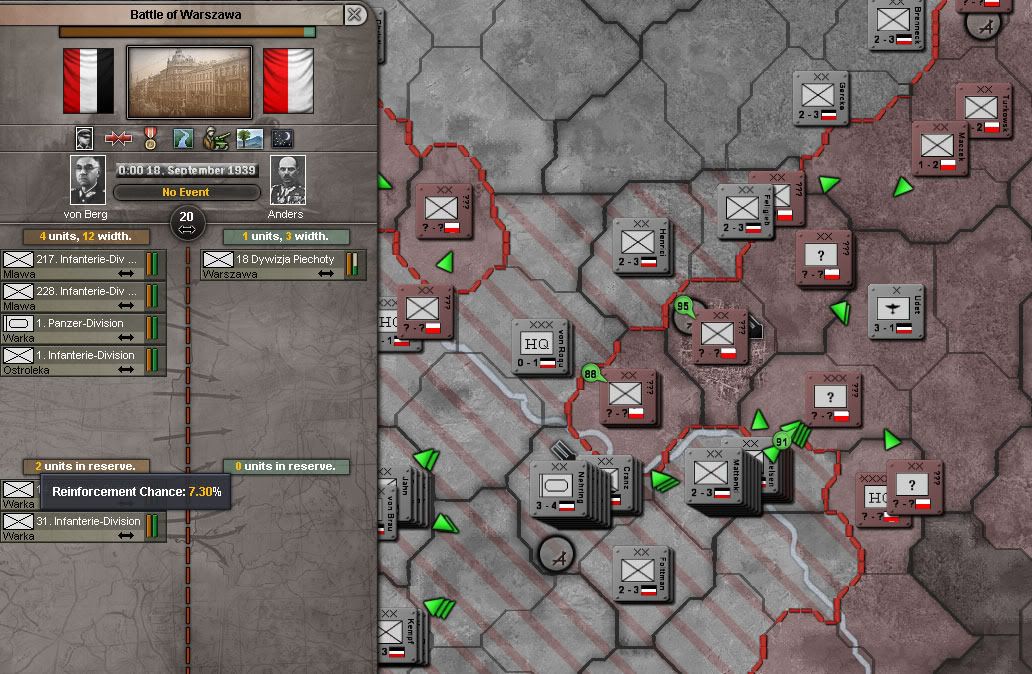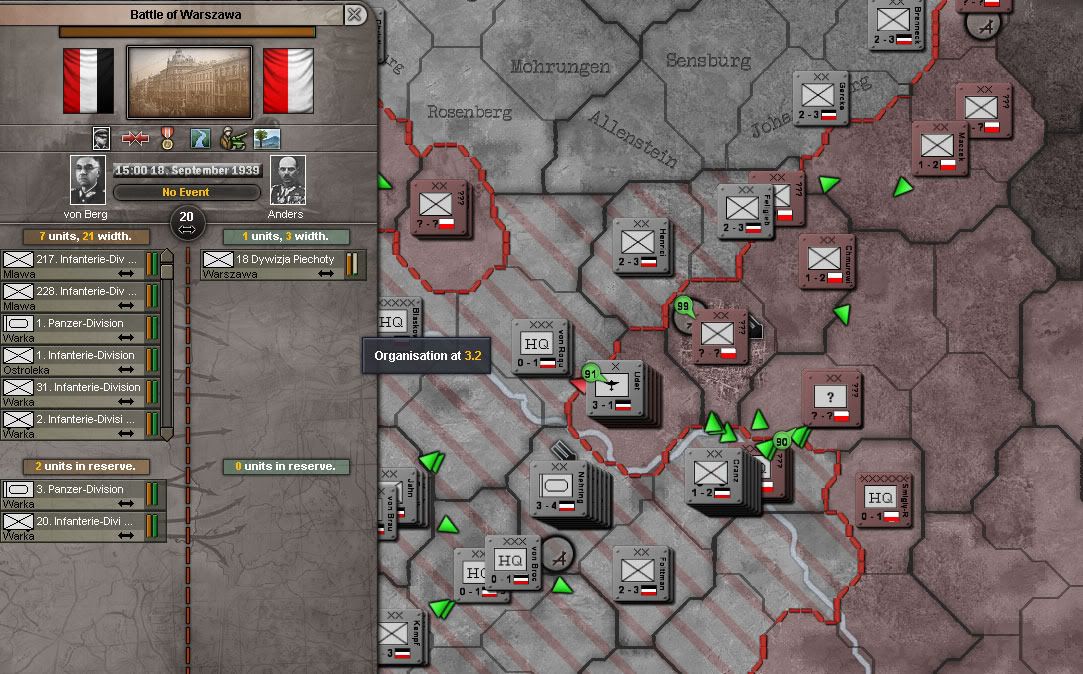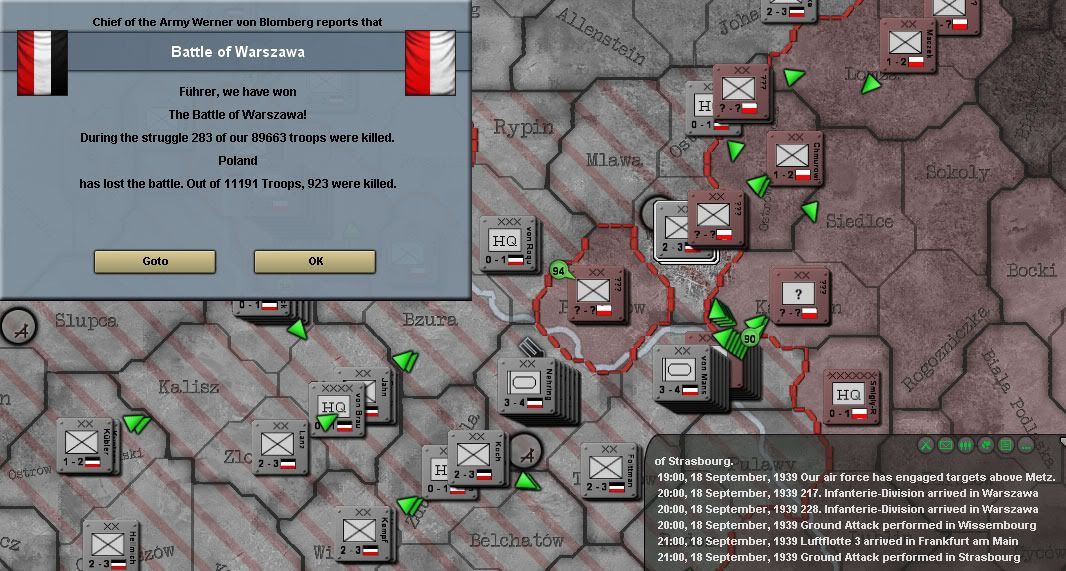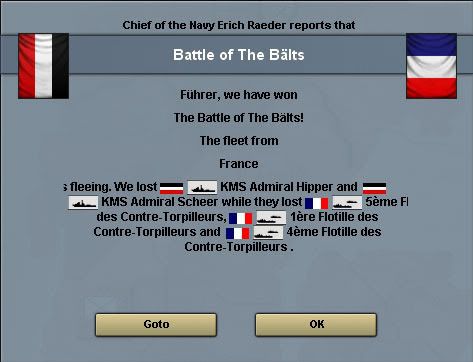XXI. End game
The Poles are now desperate. This is the kind of attack they are reduced to launching against the Wehrmacht. The only good thing going for them: the forces in Lódz were still regrouping, and this attack is going to pin down 6 divisions, delaying the moment when they threaten the Polish capital.
Another counterattack seems to be going better for them to the south-west of Lódz, but actually there are two corps who have already received orders to attack the offending Poles' own positions, the HQ only arrived first. This whole force has received orders to swing north and attack Warsaw afterwards.
You will also note that we have won the battle at Mlawa, to the north-west of Warsaw. Only 20 kilometres of empty terrain lay between our divisions and the outskirts of Warsaw.
At 15:00 on Sept. 14, almost two weeks after the battle of Poland began, the Wehrmacht fires its first shots on the defenders of Warsaw.
The city is virtually empty; only one Infantry division defends the city. It doesn't come as a surprise after a close study of our intelligence reports estimated Poland's unit count, not including those units identified and trapped in pockets, was of only 19 to cover a front extending over several hundred kilometres.
To be entirely honest, it wasn't much of a frontline...
The counterattack at Lódz faltered, as we knew it must.
There were still many units around Warsaw, and if they regrouped in the city, a gruesome fight could ensue.
Thus, OKW decided to take no chances. No less than 21 divisions were sent against the 7 divisions defending Warsaw and its surroundings, with the instructions to break the defenders manning the outer perimeter of defence and then joining the main attack against the city.
It was only a matter of when Warsaw would fall. The only hope of Poland was if the British managed to reinforce their beachhead at Kiel and then break through North Germany.
But there was now something which really resembled a frontline, and enough troops to launch a counter-offensive at Kiel. And, as we already know, the Baltic Sea was defended, even if all the Kriegsmarine could do was delay the Royal Navy once it got serious...
... but the only ones who were getting reinforced at Warsaw were the Germans. As the battles of the outer perimeter turned in favor of the Wehrmacht, reinforcements started to trickle...
...and then became a river...
...then a torrent. There was simply no way the defenders could hope to hold in such a desperate situation, and every hour brought reports of a new German unit entering Warsaw.
A Cavalry brigade did arrive to lend their support to the beleaguered defenders, but all they could do was cover their retreat across the Vistula river. The final shots of the Battle of Warsaw were fired at 18:00 on Sept. 18, nearly eighteen days after the beginning of the battle of Poland.
At the same time, in Eastern Poland, the Red Army crossed the border "to ensure protection of national minorities against abuse by Poland". There was no option left for the Poles but to capitulate, and they did on Sept. 19.
To the Allies' horror, Poland had not lasted all Autumn as they had hoped they would; they had lasted less than three weeks. Precautions were taken to cover the magnitude of the disaster, but in the USA, TIME magazine published a coverage of the campaign, introducing the word "Blitzkrieg" to describe the new way the Germans waged war.
Perspectives looked grim for the Allies, and for France in particular, who would soon feel quite alone against the Germans, as it was only a matter of time before the Wehrmacht retook Kiel.
The British, on the other hand, could feel quite safe: half of the Kriegsmarine now lay on the bottom of the Baltic sea.
**
... and this is where this AAR ends.
The troops I was building were intended to be used in an attack against France in late November. It was a repetition of the Schlieffen plan, swinging through Belgium and aiming straight at Paris, with the Panzer and Motorized divisions exploiting the breakthrough and seizing various important French cities. I was going to declare a limited war to avoid the ridicule of Italy steamrollering France while I was just out of Belgium.
It was not to be, the laptop ran out of juice before that.
Thanks to all of you who have read and replied! I hope it was a good and mildly instructive read!



